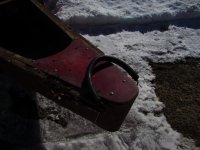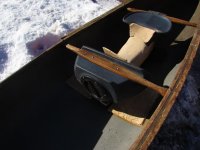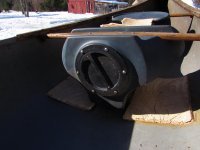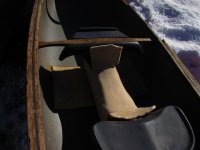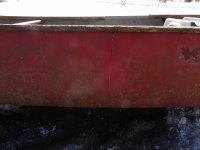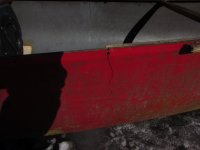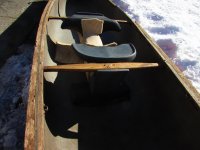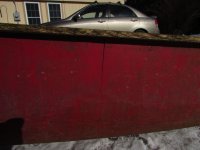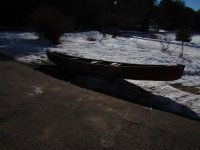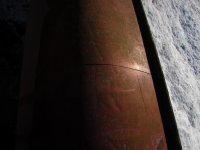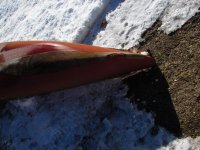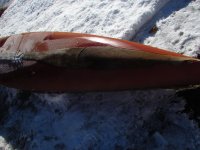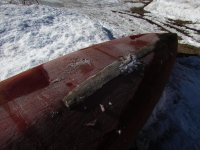Cold cracks have had their way with me in the past an Eclipise with lots of cracks to fix.
What was the continued-to-cold-crack canoe that became a worm farm?
I know that you are accomplished at regunwaling with wood, have access to suitable length boards and can do so less expensively than with vinyl. Any thoughts on using wood (and screws) again on an RX hull already proven susceptible to cold cracks?
Beyond the cold crack potential gunwale material preference, for my purposes, is dictated by storage. For inside or at least under cover storage wood is good. For storage outside in the elements I would prefer vinyl or aluminum.
I have passed along or sold cheap a bunch of rebuilds to friends; knowing many lacked inside storage space for a canoe, and suspecting that others would never bother to maintain wood gunwales, I was most comfortable using vinyl gunwales.
Well, not “comfortable”; my hand hurts after installing 70 or so pop rivets.
This thread, with a canoe that cold cracked in 2012, 2015 and 2018, makes me leery of any canoe that has presented cold cracks.
Unlike your standard Royalex ME that canoe was another cold cracked R-lite hull (with aluminum gunwales).
http://myccr.com/phpbbforum/viewtopic.php?f=49&t=39795
That makes me even leerier of R-lite/R84 type Royalex in cold climes.
BTW, the Royalex ME was made up until 1995. It is a Vermont build, and maybe pre-dates the 1990/91 production of lesser Royalex sheets.
I’ll be curious about the year of manufacture on the HIN.
That Seat is worth, way more than the canoe
True dat, those old Perception saddles still have a place, especially with some custom padding. Not sure how Doug feels about that seating. If it’s a flipper (no pun intended) it might be easiest to clean up that saddle and reinstall.

